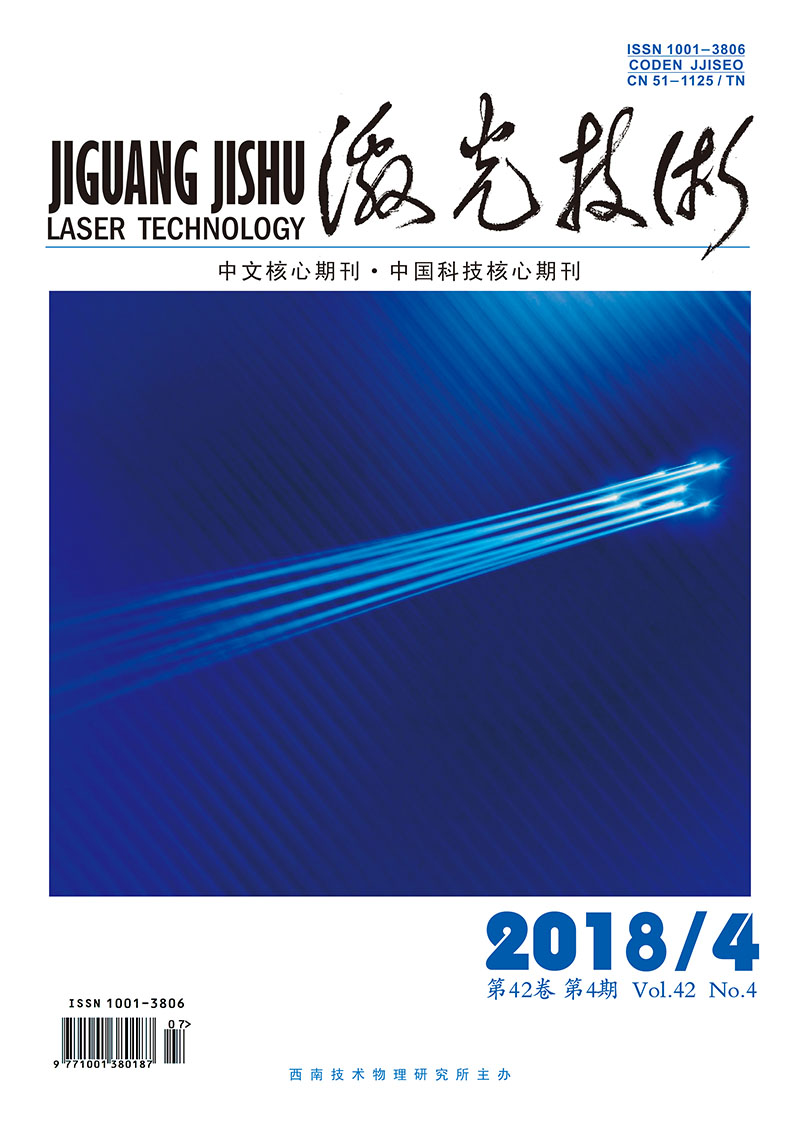HTML
-
作为发动机运转的“血液”机油,俗称发动机润滑油,在发动机正常的运转中,具有清洁杂质、抗氧化、防止生锈、冷却等功能。润滑油最大的作用是在发动机润滑系统正常工作时,减小发动机与涡轮部件之间的摩擦,保证发动机灵活运转。但是受发动机的高温环境及各部件之间摩擦的影响,导致机油变质,油液成分会发生很大的变化,这种变质的机油不但起不到润滑作用,还会加剧发动机的磨损[1]。
发动机的正常磨损分为物理磨损和化学磨损,物理磨损主要是发动机在高温及高压的环境下,金属部件之间相互摩擦,一些直径小于几个微米的碎金属颗粒(Sn,Cr,Ni等)混入到机油中[2-3];这些金属颗粒不能够通过过滤和收集器所消除,而是一直保留在润滑油中参与整个系统的运转。化学磨损主要是由于化学腐蚀、氧化,导致机油中有机化合物的化学键断裂及重组,产生一些新的化合物溶在机油中。因此,机油中一些关键元素的突然变化能够暗示发动机磨损的程度,比如Ni, Sn和Cr元素的突然增加暗示发动机中轴承、阀门和活塞之间被侵蚀;Fe元素的变化表示各活动部件之间摩擦严重;Na元素的变化暗示润滑油可能被防冻液污染[4-5]。机油一般是由基础油和添加剂两部分组成,基础油是机油的主要成分,决定着机油的基本润滑性质,一般矿物基础油主要有芳烃类的碳氢化合物和含氧、氮的有机化合物;添加剂可弥补和改善基础油性能方面的不足,赋予某些新的性能,或提高某种性能,满足更高的要求。通常添加剂主要有清净分散剂、抗氧抗腐蚀剂、防锈剂、抗磨剂等,这些添加剂中通常加入一些金属元素,比如Ag, B, Ba, Bi, Ca, Cd, Co, Cr, Fe, Hg, Mg, Mo, Ni, P, Sb, Se, Sn, Ti和Zn等[4]。因此通过对润滑油中磨损元素的检测分析,就可以掌握发动机的磨损规律,提前发现故障隐患,避免发生不可逆的损害,也可为分析机油的性能及诊断发动机的磨损状况提供非常有价值的信息[6-7]。
在发动机磨损的过程中,润滑油中添加剂里的金属元素含量将会衰减,一些元素的含量可能突然增加,所以一种能够实时监测润滑油中磨损元素微小变化的灵敏度高的检测手段是非常有必要的。但是由于润滑油基体成分复杂、有机负荷高和粘稠度高等,使其对润滑油磨损元素成分的分析,遇到了诸多困难。目前除了一些电分析技术[8-12]和X射线荧光光谱分析(X-ray fluorescence,XRF)技术[13]已经对润滑油中磨损元素Zn,Cu,Pb,Fe,Cr,Ni,As和Cd进行了检测,其主要的分析方法为原子光谱技术,比如火焰原子吸收光谱法(flame atom absorption spectrometry,FAAS)、电感耦合等离子体发射光谱法(inductively coupled plasma optical emission spectrometry,ICP-OES)、电感耦合等离子体质谱法(inductively coupled plasma mass spectrometry,ICP-MS)和原子荧光光谱法(atomic fluorescence spectrometry,AFS)等。
本文中将会对原子光谱技术中的一些检测手段和近年来新兴的一种检测手段激光诱导击穿光谱(laser induced breakdown spectroscopy, LIBS)技术在润滑油中磨损元素检测的应用情况进行综述,介绍技术的应用情况及每种方法的优缺点,期望能够在润滑油的检测方面提供有价值信息。
-
原子光谱技术是现在分析润滑油中磨损元素的一种主要的手段,大量的专家学者对其进行了广泛的研究。20世纪50年代,基于放电电极的光学辐射光谱方法(optical emission spectrometry,OES)最早被用来对润滑油中的元素进行分析,但是为了获得稳定的分析结果,大部分的OES技术与电感耦合等离子体(inductive coupled plasma, ICP)技术结合(ICP-OES)[14-17],其中ICP可以激发更多的金属元素和实现多元素的同时探测。ICP-OES已对润滑油中的大部分元素进行了分析,比如Ag, Al, Ba, Ca, Cr, Cu, Fe, Mg, Mn, Ni, Pb, Si, Sn和Zn,其检测限均低于μg/g,但是该方法需要用有机溶剂进行溶解稀释等复杂的样品前期处理,会导致出现非常高的背景信号,而且受到润滑油中颗粒大小的限制,导致对样品处理须经过比较繁琐的过程[14-15]。随着样品处理的改进,将油和水混合成乳状液体,可以使ICP-OES方法增加等离子体的稳定性和减少背景信号,Ni, V, Mo, Cr, Ti等一些难熔的实验室模拟的乳状油样品被检测,获得了较好的检测结果[18]。
-
20世纪70年代,原子荧光光谱AFS技术对润滑油中的Ag, Cu, Fe, Mo和Mg元素进行了分析检测,但是由于低辐射的光源,背景辐射比较强导致信号被淹没,其最低检测限为μg/g量级[19-21]。在检测过程中,一些元素的检测例如Pb, Cr和Ni元素会受到能带结构和荧光的连续背景的干扰,导致检测结果较差[21]。
随着原子光谱技术的发展,火焰原子吸收FAAS光谱技术凭借其较低的原子吸收噪声被应用到润滑油中磨损元素的检测分析,而且为了进一步的减小原子吸收的噪声干扰,一些改进的FAAS技术应运而生。比如流动注射火焰原子吸收光谱法(flow injection analysis- flame atom absorption spectrometry,FIA-FAAS)采用油和水乳化的样品处理方法被用来检测油中的Fe, Cu, Cr和Pb,避免了噪声干扰和背景干扰[22-23];电热原子吸收光谱法(electro-thermal atomic absorption spectrometry,ETAAS)技术对润滑油中的Al, Ag, Sb, Sn和Cr进行了分析检测,灵敏度得到大大改善,而且ETAAS方法能检测的元素相比原子吸收光谱法(atom absorption spectrometry,AAS)也增加了许多[24];鉴于这两种方法的本身优势,将FIA-AAS与ETAAS结合提出的FIA-ETAAS技术对Cr和Al进行了分析,在样品乳化处理、自动进样等方面将AAS技术对油样品检测的结果改善更进一步[25]。综上所述,基于AAS的光谱检测技术的设备因为需求的进样量较少,物理磨损导致的金属颗粒在样品中分布不均匀导致分析结果不准确,除非进行一系列的样品前期处理。
-
电感耦合等离子体质谱ICP-MS技术作为一种灵敏度、多元素分析的技术,也被用来分析润滑油样品[26-28],但是该方法由于仪器的复杂性及价格昂贵,导致没有被广泛的应用。而且同样由于润滑油本身复杂的基体,前期样品处理也要经过一系列繁琐的过程,比如对样品采用二甲苯稀释之后利用电热蒸发的方法实现了机油中Al, Mg, Fe和Y高灵敏度检测[26]。综上所述,由于ICP-MS灵敏度非常高,样品须经过大量的稀释程序才可以减少有机基体对检测结果的干扰,因此,ICP-MS方法的最大的缺陷为样品前期处理必须经过一些列程序或者借助类似超声波雾化等方法才可以减小有机基体对检测结果的影响[27]。
1.1. 光学辐射光谱方法
1.2. 原子荧光与原子吸收光谱方法
1.3. 电感耦合等离子体质谱法
-
激光诱导击穿光谱技术是基于高功率的脉冲激光与物质相互作用,产生瞬态高温等离子体,通过等离子体辐射完成对样品的定性与定量分析的一种分析方法。该技术突出的优点为几乎不需要对样品进行前期复杂处理;能够快速、在线实现多种元素的同时探测;对样品需求量较少(μg量级);灵敏度较高,可实现样品μg/g量级甚至低于该量级的探测[29]。激光诱导击穿光谱技术自20世纪60年代提出以来,在各个领域得到了广泛应用,包括土壤检测、文物分析、矿物分析、珠宝检测、汽车尾气实时监测等方面,而且也已开发出多种在线便携式检测仪器[30-31],是一种非常有前景的应用探测技术。LIBS技术在国内也迅速发展,从2011年开始的第一届LIBS专题会议以来,每年一届,筹备了LIBS专业委员会,将国内LIBS技术的发展推向高潮,已经在海洋探测、煤质分析、土壤检测、农产品分析、钢水在线监测、气溶胶监测、水中重金属分析等多个领域得到了广泛应用[32]。
利用LIBS技术对油类样品的检测迄今已有10多年的研究发展。起初,因为LIBS技术对液体样品直接检测时,会受到液体溅射、波动、吸收等不利因素,尤其是针对粘稠性的不透明的润滑油样品,更多的不利因素导致等离子体辐射强度较弱、重复率低,LIBS技术在液体方面的检测受到限制。后来,随着LIBS技术的发展,为了改善LIBS技术对液体样品的检测效果,许多行之有效的方法被逐渐提出,其中将液体样品检测转化为固体样品检测是一种非常有效的方法,比如将液体样品冻成冰块[33];吸附到木片中[34]或者滤纸中[35-37];滴到金属基底上晾干[38]等,这些方法都避免了直接检测液体样品时的不利因素,大大提高了检测灵敏度和稳定性。因为润滑油本身的粘稠性、不易挥发、不透明等特性,只有某些对液体检测的方法是可行的。许多研究学者对原油泄漏的样品进行检测,大部分采用将原油样品进行高温蒸馏再固化等方式将液体样品转化为固体样品,实现了原油中Ca, Fe, Mg, Cu, Zn, Ni和Mo等元素的高灵敏度检测[39-41],但是该种方法需经历比较繁琐的样品预处理程序,体现不出LIBS技术的快速探测、无需经过样品复杂预处理的优势。为了适应现场快速探测的目的,2001年FICHET等人利用LIBS技术对润滑油进行了分析,采用将激光脉冲聚焦在静止的油表面,实现了润滑油中12种元素的探测,但是灵敏度较低,一些元素的最低检测限为几十μg/mL[42]。2005年, YAROSHCHYK等人比较了利用激光脉冲在润滑油静止表面和流动的表面聚焦的分析结果,发现采用流动的表面聚焦方式获得最低检测限相比于静止的方式提高了数倍[43]。然而为了获得更低的检测浓度,YAROSHCHYK等人在同一年提出了将润滑油吸附到滤纸上,然后用LIBS技术对其检测,而且比较了单脉冲和双脉冲的分析结果,表明采用滤纸吸附的方式获得最低检测限比以往LIBS检测方式更低,重复率更高[44]。2011年, ELNASHARTY等人也是利用滤纸吸附的方法,获得了润滑油中非金属磨损元素的演化,得到发动机在不同里程数下的润滑油中CN, C2分子的变化,对诊断润滑油的性能提供了非常有价值的参考信息[45]。
LIBS技术对润滑油中磨损元素的分析具有广阔的应用前景,XIU等人利用LIBS技术对润滑油进行了更深入的研究,充分利用润滑油本身的粘稠性的特性,首次提出间接烧蚀LIBS方法[46],将几个毫升的润滑油样品滴在纯金属靶上,形成一层大约15μm的油膜,将激光脉冲聚焦在金属靶上产生高温金属等离子体,然后等离子体与油膜相互作用,间接烧蚀完成油膜中元素的高灵敏度探测。间接烧蚀LIBS技术的增强原理及等离子体的演化特性已被初步研究[47],其增强效果也进行了分析,与滤纸吸附相比,间接烧蚀LIBS方法对润滑油中磨损元素的最检测浓度更低,甚至低于双脉冲检测方式[48]。为了探讨该技术应用到现场的可行性,该课题组对不同种类的润滑油进行了检测,研究了不同润滑油之间的基体效应对分析结果的影响,表明间接烧蚀LIBS技术对不同油种进行检测时,基体效应可以忽略不计,得到了每种元素的一条统一的定标曲线,为应用到现场提供了重要的参考价值[49-50]。
目前LIBS技术应用到机油样品的检测,与其它与原子光谱技术相比,最大的优势在于无需对样品进行一系列的复杂预处理,直接用激光对其烧蚀产生等离子体,可以实现在线快速多元素同时探测。但是LIBS技术应用到油类样品检测时,防止激光直接烧蚀时的溅射是一个考虑的重要方面,而且直接对其检测灵敏度将会较低,重复性也会受到影响。因此LIBS技术对油类样品检测,预期获得灵敏度高、重复性好的检测结果,采用滤纸吸附或者间接烧蚀方法将会有较好的发展前景。
-
LIBS技术针对润滑油样品的检测灵敏度和测量重复性一直是限制该技术应用到现场的最主要的问题,但是间接烧蚀LIBS不仅具备了LIBS技术的快速、几乎不需要样品前处理、多元素可同时探测的优势,而且克服了检测灵敏度低和重复率差的问题,几乎达到了与ICP测量的检测限和准确性[49-50]。间接烧蚀LIBS技术不仅可以探测润滑油中磨损金属元素的演变,而且还可以探测非金属元素比如C, CN, C2等的演变,通过对经过不同里程的发动机润滑油进行检测,可以实时诊断润滑油的性能,预知发动机的运转情况,预防事故的发生甚至进一步的恶化。因此间接烧蚀LIBS技术在润滑油检测方面具有巨大的应用潜力,可以开发出能够实时在线监测的间接烧蚀LIBS仪器,为汽车行业、工业机器、飞机、轮船等应用发动机的领域具有广阔的应用前景。
-
机油中磨损元素的分析检测方法,目前较为主流的是原子光谱分析方法,包括ICP, AAS, AFS, LIBS等。其中ICP, AAS, AFS前期样品处理复杂,分析仪器价格昂贵,信号容易受到机油复杂基体效应的影响等,难以实现对机油样品在线快速探测;LIBS技术可以克服上述不利因素,但其检测的灵敏度太低。因此克服灵敏度低的问题是LIBS技术应用到机油样品检测中的技术难题。本文中,作者所在课题组引入了间接烧蚀LIBS技术的概念, 该技术既保留了LIBS技术的优势,又大大提高了检测的灵敏度。间接烧蚀LIBS技术未来发展的目标是开发出适合现场应用的快速探测的仪器。实现该技术的仪器研发,面临着诸多挑战,期待能够实现该技术的现场探测。

 Map
Map



 DownLoad:
DownLoad: